Hi guys
I am new here and I am hoping I could possibly make use of some your wealth of knowledge.
I went to see a mid-terrace first floor 1-bed flat in north London yesterday which is going for auction soon. The building is 4 stories high.
The flat is quite interesting except for the pretty big cracks on the walls and ceiling seen in the pictures, as well as a sloping floor in the front room. Spoke also to the upstairs neighbour, who confirmed that there are cracks upstairs too. I am guessing this probably points to the front of the house "sinking". From the outside there are no obvious visible cracks though.
The flat is a leasehold and the vendor is a housing association, which also owns the other 2 flats in the building, but as I understand they are occupied and currently not being sold.
I am considering what to do. I am not a big expert so I am wondering what the implication could be with that kind of damage/issue, both in terms of potential repair/structural work, insurance costs, as well as from an investment perspective and how much something like that could potentially affect the future value of the property.
I would buy cash, so no mortgage approval considerations in this case.
I am thinking that because of this issue maybe it can be snapped at auction at a good price, but is it worth it, or you think I should just walk away given the circumstances?
Thank you
I am new here and I am hoping I could possibly make use of some your wealth of knowledge.
I went to see a mid-terrace first floor 1-bed flat in north London yesterday which is going for auction soon. The building is 4 stories high.
The flat is quite interesting except for the pretty big cracks on the walls and ceiling seen in the pictures, as well as a sloping floor in the front room. Spoke also to the upstairs neighbour, who confirmed that there are cracks upstairs too. I am guessing this probably points to the front of the house "sinking". From the outside there are no obvious visible cracks though.
The flat is a leasehold and the vendor is a housing association, which also owns the other 2 flats in the building, but as I understand they are occupied and currently not being sold.
I am considering what to do. I am not a big expert so I am wondering what the implication could be with that kind of damage/issue, both in terms of potential repair/structural work, insurance costs, as well as from an investment perspective and how much something like that could potentially affect the future value of the property.
I would buy cash, so no mortgage approval considerations in this case.
I am thinking that because of this issue maybe it can be snapped at auction at a good price, but is it worth it, or you think I should just walk away given the circumstances?
Thank you
Attachments
-
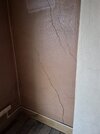 WhatsApp Image 2024-11-06 at 08.47.00_54660951.jpg315.9 KB · Views: 47
WhatsApp Image 2024-11-06 at 08.47.00_54660951.jpg315.9 KB · Views: 47 -
 WhatsApp Image 2024-11-06 at 08.46.59_3654cb26.jpg329.5 KB · Views: 47
WhatsApp Image 2024-11-06 at 08.46.59_3654cb26.jpg329.5 KB · Views: 47 -
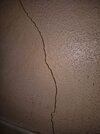 WhatsApp Image 2024-11-06 at 08.46.59_b5359a7d.jpg346.4 KB · Views: 48
WhatsApp Image 2024-11-06 at 08.46.59_b5359a7d.jpg346.4 KB · Views: 48 -
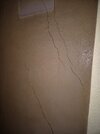 WhatsApp Image 2024-11-06 at 08.46.59_b94a70cd.jpg297.5 KB · Views: 48
WhatsApp Image 2024-11-06 at 08.46.59_b94a70cd.jpg297.5 KB · Views: 48 -
 WhatsApp Image 2024-11-06 at 08.46.59_c9d8a797.jpg346.8 KB · Views: 51
WhatsApp Image 2024-11-06 at 08.46.59_c9d8a797.jpg346.8 KB · Views: 51 -
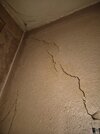 WhatsApp Image 2024-11-06 at 08.46.59_3fae39bf.jpg337.7 KB · Views: 49
WhatsApp Image 2024-11-06 at 08.46.59_3fae39bf.jpg337.7 KB · Views: 49 -
 WhatsApp Image 2024-11-06 at 08.46.59_99127ee9.jpg300.1 KB · Views: 44
WhatsApp Image 2024-11-06 at 08.46.59_99127ee9.jpg300.1 KB · Views: 44 -
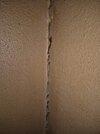 WhatsApp Image 2024-11-06 at 08.46.58_31106d2a.jpg308.7 KB · Views: 40
WhatsApp Image 2024-11-06 at 08.46.58_31106d2a.jpg308.7 KB · Views: 40 -
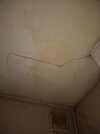 WhatsApp Image 2024-11-06 at 08.46.58_849eb1e4.jpg142.1 KB · Views: 38
WhatsApp Image 2024-11-06 at 08.46.58_849eb1e4.jpg142.1 KB · Views: 38 -
 WhatsApp Image 2024-11-06 at 08.46.59_b0aeae92.jpg329.7 KB · Views: 50
WhatsApp Image 2024-11-06 at 08.46.59_b0aeae92.jpg329.7 KB · Views: 50

